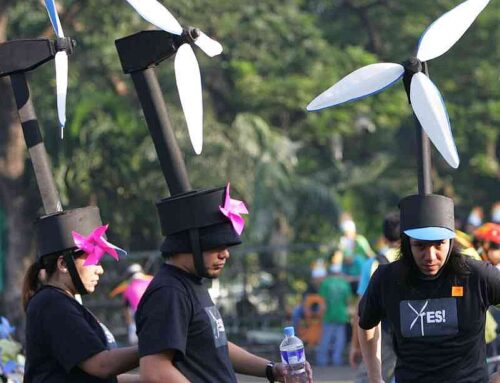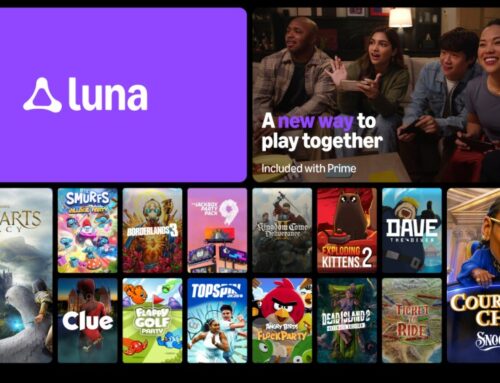Lesson plan: Exploring environmental impacts of coral reef pollution using robotics
April 24, 2025
For a Google doc version of this lesson, click here. You will be prompted to make a copy.
Overview
In this lesson, students will engage in a simulated coral reef cleanup activity and apply critical thinking to solve environmental challenges using the VEXcode VR platform to code a virtual robot.
Essential question
How can we use technology to clean and preserve coral reefs effectively?
Subjects
Science, environmental science, design, engineering, math
Estimated time
One 50-minute class session
Grades
6-12
Materials
- Computers with internet access
- Access to VEXcode VR platform: https://vr.vex.com/
- Paper
- Pencil

Introduction
Coral reefs are often called the “rainforests of the sea,” harboring an unparalleled diversity of marine life and providing invaluable ecological services to our planet. However, despite their immense ecological significance, coral reefs face unprecedented threats due to human activities, particularly pollution and climate change.
Vocabulary
- coral reef — A marine ecosystem characterized by colonies of coral polyps that form structures serving as habitats for a diverse range of marine organisms
- environmental conservation — The practice of protecting and preserving the natural environment and its resources to ensure their sustainability for future generations
- VEXcode VR Platform — An online tool that allows users to code virtual robots to perform various tasks in simulated environments
- ocean cleanup — The process of removing pollutants, such as plastic debris, from oceans and marine ecosystems to mitigate environmental damage and protect marine life
- sustainability — The ability to maintain ecological balance by conserving natural resources and minimizing environmental impact to meet the needs of present and future generations
Warm-up activity (10 min)
- Watch PBS NewsHour’s ‘TeamSeas’ uses YouTube to tackle the global plastic problem in its entirety.
- As students watch, they should write down the risks of having so much plastic in our oceans. Then, students should take 5 minutes to talk with the whole group to discuss the role of technology in environmental conservation and how students can contribute to coral reef preservation efforts.
Main activity (50 mins.)
Clean the mangrove coral reef
- Students can work individually or team up with a partner
- Students will go to https://vr.vex.com/
- Students will click on the “select playground” button at the top of the page and then choose the “coral reef cleanup” playground
- Students will drive the VR Ocean Cleaning Robot to collect as much trash as possible from the coral reef before the battery on the robot runs out. They will follow these guidelines:
- Blocks – Use the Drivetrain blocks to code your robot to complete the challenge.
- [Drive for] — drives the robot forward or in reverse for a specified distance
- [Turn for] — turns the robot right or left for a specified distance
- Balance speed with battery life — Driving faster drains the battery on the robot more quickly.
- [Set drive velocity] — sets the speed of the drivetrain
- Try waiting — More trash falls to the floor the longer your robot runs.
- Try adding a [Wait] block to your project to make the robot wait for more trash to fall.
- Use a sensor — The VR Ocean Cleaning Robot is equipped with multiple sensors to detect trash and the blue border around the coral reef.
- Try using a [Wait until] block with a sensor to make the robot drive until the Eye Sensor detects trash.
(Optional) Day 2: Let’s compete
- Now that the students are familiar with the challenge, they can spend a few minutes determining what strategy they would use to collect the most trash before the battery power runs out.
- Students will compete against each other to see who can collect the most trash.
Share the winning amount with the class and discuss what strategy was used! Send a picture of the winning amount to PBS News Hour Classroom at education@newshour.org or share directly to social media using the hashtag #PBSInvention.
Note: For additional assistance, go to VEXcode VR – VEX Library.
Extension activities
- Students can watch Turning 315 billion pounds of plastic ocean pollution into sea-saving art and brainstorm how else they could reuse and recycle the trash that their robots collected from the mangrove reef.
- Students can discuss the importance of innovative thinking and renewable energy in tackling environmental issues like coral reef degradation. Encourage students to consider how they can contribute to sustainable practices in their daily lives and communities.
More invention lessons can be found here.
Standards
English Language Arts:
- MS-PS1-6: Constructing Explanations and Designing Solutions Constructing explanations and designing solutions in 6–8 builds on K–5 experiences and progresses to include constructing explanations and designing solutions supported by multiple sources of evidence consistent with scientific knowledge, principles, and theories. Undertake a design project, engaging in the design cycle, to construct and/or implement a solution that meets specific design criteria and constraints.
- MS-LS2-1: Cause and effect relationships may be used to predict phenomena in natural or designed systems.
- HS-ETS1-3: Evaluate a solution to a complex real-world problem, based on scientific knowledge, student-generated sources of evidence, prioritized criteria, and trade-off considerations.
- NGSS-MS-PS2-1: Apply scientific ideas or principles to design an object, tool, process or system.
About the author
Lori Colangelo has more than 25 years of experience as an educator and currently serves as an instructor at the Hopewell Area School District in Aliquippa, Penn. Passionate about education, Lori frequently presents at international conferences, mentors new STEM teachers, and develops curriculum for several prominent educational technology companies. In her free time, she loves traveling with her husband and spending time with her family.
Watch Lori Colangelo in this Educator Voice: Creating lifelong learners through robotics and equity
Fill out this form to share your thoughts on Classroom’s resources.
Sign up for NewsHour Classroom’s ready-to-go Daily News Lessons delivered to your inbox each week.
Search
RECENT PRESS RELEASES
Related Post




